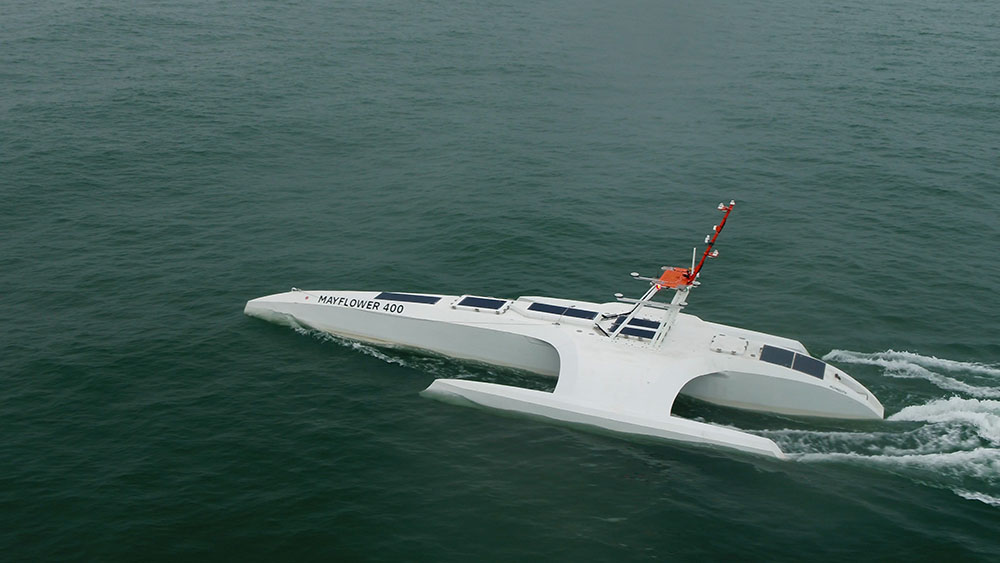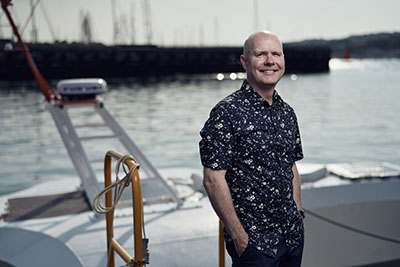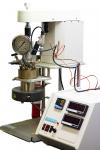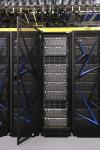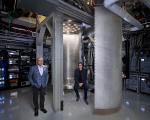Asset gallery
-
Download: Hi Res (1.6 MB)
-
Download: Hi Res (9.1 MB)
Credit: Tom Barnes for IBM
-
Download: Hi Res (8.6 MB)
Credit: Tom Barnes for IBM
-
Download: Hi Res (5.1 MB)
Credit: Tom Barnes for IBM
-
Download: Hi Res (9.6 MB)
Credit: Tom Barnes for IBM
-
Download: Hi Res (7.4 MB)
Credit: Tom Barnes for IBM
-
Download: Hi Res (11.1 MB)
This year's IBM "5 in 5" predictions focus on accelerating the discovery of new materials to enable a more sustainable future. In line with the United Nation’s global call-to-action through its Sustainable Development Goals, IBM researchers are working to speed up the discovery of new materials that will address significant worldwide problems. Specifically, we are exploring how technology can be used to reinvent the materials design process to find solutions to such challenges as fostering good health and clean energy as well as bolstering sustainability, climate action and responsible production.
-
Download: Hi Res (12.9 MB)
In the next five years, we will be able to capture CO2 more efficiently and transform it into something useful. IBM researchers are working on a sustainable materials development platform for harnessing CO2 as a raw material for monomers and polymers such as plastic. The instrument pictured here is used to synthesize new CO2-based materials designed with a focus towards recyclability that allows for recovery and reuse.
-
Download: Hi Res (361 KB)
In the next five years, we will discover new materials for safer and more environmentally-preferable batteries capable of supporting a renewable-based energy grid and more sustainable transportation. Many renewable energy sources are intermittent and require storage. The use of AI and quantum computing will result in batteries built with safer and more efficient materials for improved performance.
-
Download: Hi Res (4.8 MB)
A battery evaluation board in the IBM Research-Almaden Battery Lab used to measure the performance of a cobalt- and nickel-free battery developed by IBM researchers. The researchers showed that the battery could have higher power density, lower flammability and much faster charging times than conventional Li-ion batteries.
-
Download: Hi Res (3.1 MB)
A battery tester and cycler in the IBM Research-Almaden Battery Lab, where IBM researchers developed a cobalt- and nickel-free battery that relies on an iodine-based cathode. The researchers showed that the battery could have higher power density, lower flammability and much faster charging times than conventional Li-ion batteries.
-
Download: Hi Res (665 KB)
In the next five years, we will advance materials manufacturing, enabling semiconductor manufacturers to improve the sustainability of their coveted products. Scientists will embrace a new approach to materials design that enables the tech industry to more quickly produce sustainable materials for the production of semiconductors and electronic devices.
-
Download: Hi Res (2.8 MB)
The SUNY Polytechnic Institute Colleges of Nanoscale Science and Engineering’s NanoTech Complex in Albany, NY is an example of where semiconductors are produced and photoresist materials are used. (Photo credit: Dan Corliss)
-
Download: Hi Res (1.2 MB)
The SUNY Polytechnic Institute Colleges of Nanoscale Science and Engineering’s NanoTech Complex in Albany, NY is an example of where semiconductors are produced and photoresist materials are used. (Photo credit: Connie Zhou)
-
Download: Hi Res (6.1 MB)
The convergence of emerging technologies allows us to address the discovery process in a fundamentally new way. Once labelled promising but distant, quantum computers are developing steadily and show potential to simulate complex molecules on the fly, accurately and rapidly predicting the outcome of chemical reactions and helping us discover entirely new classes of materials.
Photo taken at 2018 ASCE (Credit: Graham Carlow)
-
Download: Hi Res (806 KB)
The convergence of emerging technologies allows us to address the discovery process in a fundamentally new way. AI and quantum will increasingly combine with rapidly-advancing high-performance classical computers as a platform for scientific discovery.
The IBM-built Summit supercomputer pictured here is the world's smartest and most powerful supercomputer. (Photo Credit: ORNL)
-
Download: Hi Res (4 MB)
IBM Chief Executive Officer Arvind Krishna (left) and Director of IBM Research Dario Gil are pictured with a 10-foot-tall and 6-foot-wide "super-fridge,” a dilution refrigerator larger than any commercially available. The “super-fridge” is being custom built by IBM to effectively support quantum systems as they scale to the thousands and eventually million-plus qubit systems of the future that will be capable of solving problems out of reach of today’s most powerful supercomputers (Credit: Connie Zhou for IBM)
-
Download: Hi Res (2.6 MB)
IBM Chief Executive Officer Arvind Krishna (left) and Director of IBM Research Dario Gil are pictured with a 10-foot-tall and 6-foot-wide "super-fridge,” a dilution refrigerator larger than any commercially available. The “super-fridge” is being custom built by IBM to effectively support quantum systems as they scale to the thousands and eventually million-plus qubit systems of the future that will be capable of solving problems out of reach of today’s most powerful supercomputers (Credit: Connie Zhou for IBM)
-
Download: Hi Res (1.9 MB)
:IBM Chief Executive Officer Arvind Krishna (left) and Director of IBM Research Dario Gil are pictured with a 10-foot-tall and 6-foot-wide "super-fridge,” a dilution refrigerator larger than any commercially available. The “super-fridge” is being custom built by IBM to effectively support quantum systems as they scale to the thousands and eventually million-plus qubit systems of the future that will be capable of solving problems out of reach of today’s most powerful supercomputers.
Credit: Connie Zhou for IBM -
Download: Hi Res (1.7 MB)
IBM Quantum Hummingbird is a 65-qubit processor available on the IBM Cloud for members of the IBM Q Network. Quantum processors rely on the mathematics of elementary particles in order to expand computational capabilities, running quantum circuits rather than the logic circuits of digital computers.
Credit: Connie Zhou for IBM
